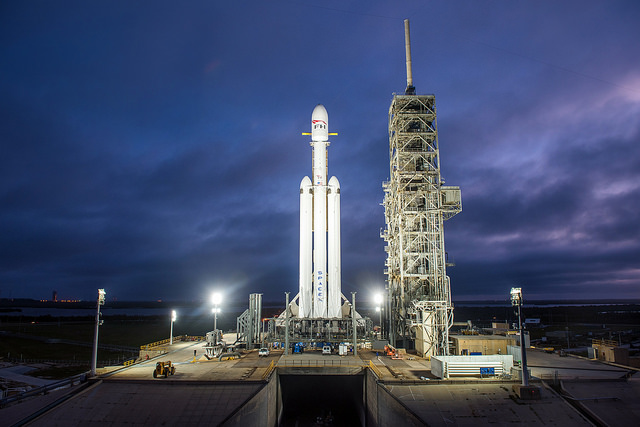
First commercial space taxi a pit stop on Musk’s Mars quest
By ASSOCIATED PRESS
Industry Aerospace aerospace Mars Musk NASA SpaceXSpace is becoming the domain of private firms, with eccentric Elon Musk's SpaceX at the forefront.

A SpaceX Falcon 9 rocket. PHOTO: SpaceX
CAPE CANAVERAL, Fla. — It all started with the dream of growing a rose on Mars. Elon Musk’s vision morphed into a shake-up of the old space industry, and a fleet of new private rockets.
Now, those rockets will launch NASA astronauts from Florida to the International Space Station — the first time a for-profit company will carry astronauts into the cosmos.
It’s a milestone in the effort to commercialize space. But for Musk’s company, SpaceX, it’s also the latest milestone in a wild ride that began with epic failures and the threat of bankruptcy.
If the company’s eccentric founder and CEO has his way, this is just the beginning: He’s planning to build a city on the red planet, and live there.
“What I really want to achieve here is to make Mars seem possible, make it seem as though it’s something that we can do in our lifetimes and that you can go,” Musk told a cheering congress of space professionals in Mexico in 2016.
Musk “is a revolutionary change” in the space world, says Harvard University astrophysicist Jonathan McDowell, whose Jonathan’s Space Report has tracked launches and failures for decades.
Musk has become best known for Tesla, his audacious effort to build an electric vehicle company. But SpaceX predates it.
There are many space companies and like all of them, SpaceX is designed for profit. But what’s different is that behind that profit motive is a goal, which is simply to “Get Elon to Mars,” McDowell says. “By having that longer-term vision, that’s pushed them to be more ambitious and really changed things.”
Everyone at SpaceX, from senior vice-presidents to the barista who offers its in-house cappuccinos and FroYo, “will tell you they are working to make humans multi-planetary,” says former SpaceX Director of Space Operations Garrett Reisman, an ex-astronaut now at the University of Southern California.
Musk founded the company just before NASA ramped up the notion of commercial space.
Traditionally, private firms built things or provided services for NASA, which remained the boss and owned the equipment. The idea of bigger roles for private companies has been around for more than 50 years, but the market and technology weren’t yet right.
NASA’s two deadly space shuttle accidents — Challenger in 1986 and Columbia in 2003 — were pivotal, says W. Henry Lambright, a professor of public policy at Syracuse University.
When Columbia disintegrated, NASA had to contemplate a post-space shuttle world. That’s where private companies came in, Lambright says.
After Columbia, the agency focused on returning astronauts to the moon, but still had to get cargo and astronauts to the space station, says Sean O’Keefe, who was NASA’s administrator at the time. A 2005 pilot project helped private companies develop ships to bring cargo to the station.
SpaceX got some of that initial funding. The company’s first three launches failed. The company could have just as easily failed too, but NASA stuck by SpaceX and it started to pay off, Lambright says.
“You can’t explain SpaceX without really understanding how NASA really kind of nurtured it in the early days,” Lambright says. “In a way, SpaceX is kind of a child of NASA.”
Since 2010, NASA has spent US$6 billion to help private companies get people into orbit, with SpaceX and Boeing the biggest recipients, says Phil McAlister, NASA’s commercial spaceflight director.
NASA plans to spend another $2.5 billion to purchase 48 astronaut seats to the space station in 12 different flights, he says. At a little more than $50 million a ride, it’s much cheaper than what NASA has paid Russia for flights to the station.
Starting from scratch has given SpaceX an advantage over older firms and NASA that are stuck using legacy technology and infrastructure, O’Keefe says.
And SpaceX tries to build everything itself, giving the firm more control, Reisman says. The company saves money by reusing rockets, and it has customers aside from NASA.
The California company now has 6,000 employees.
